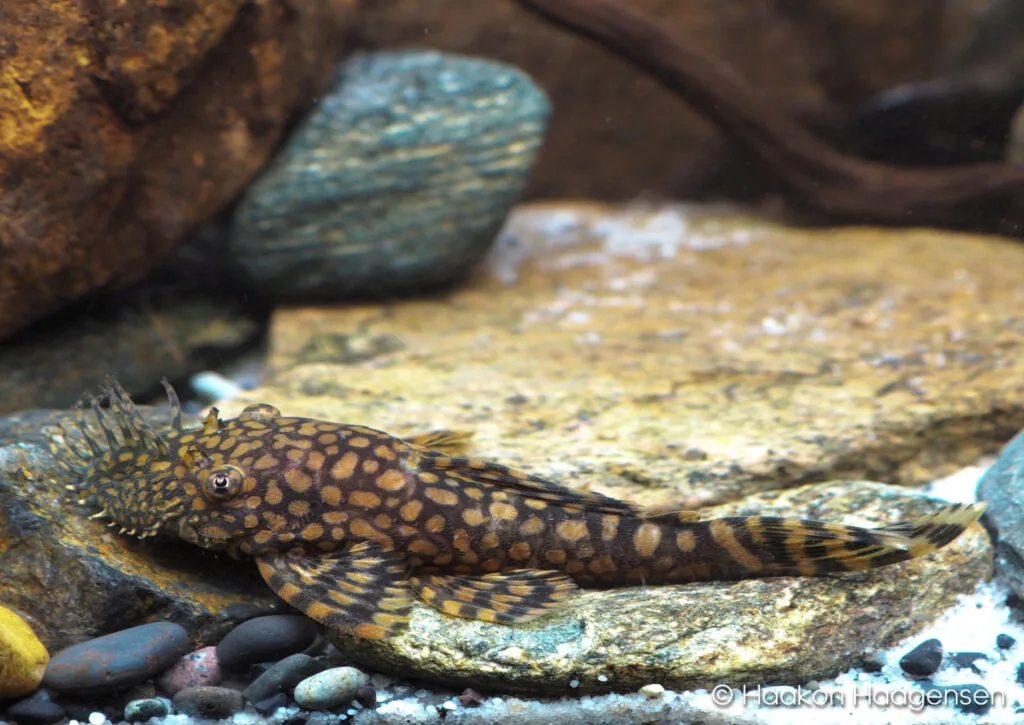


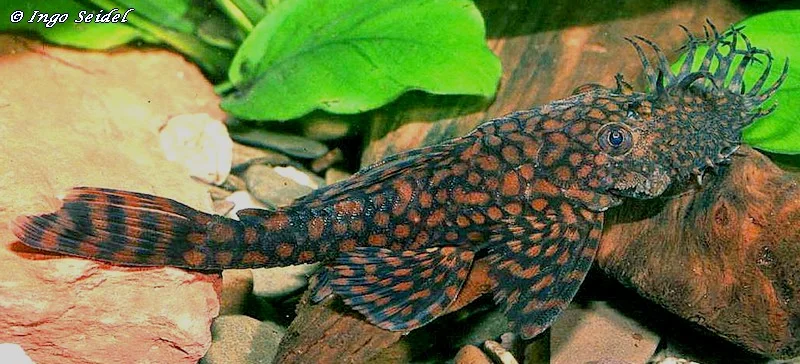
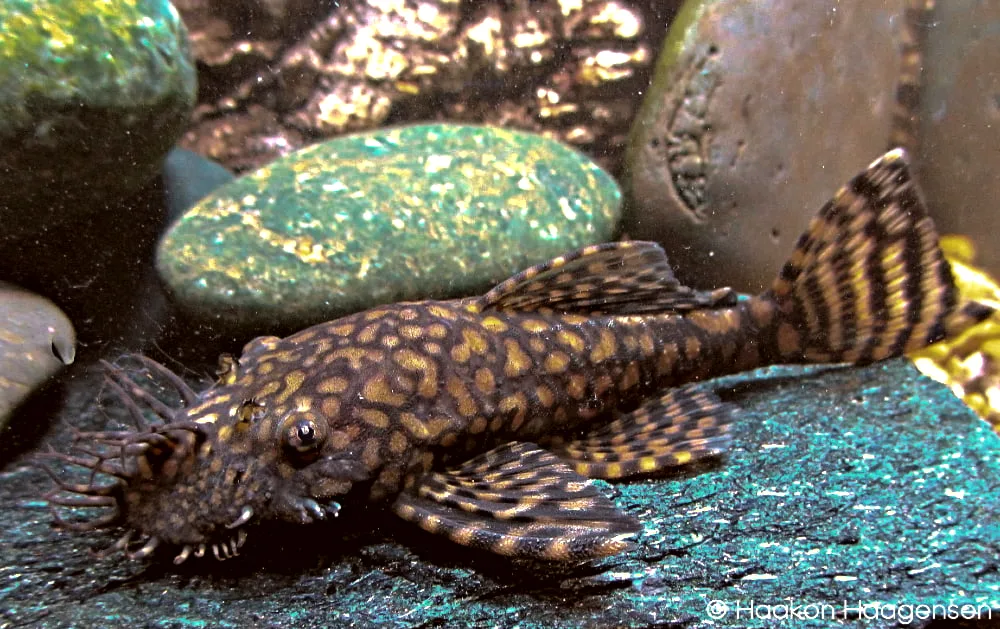
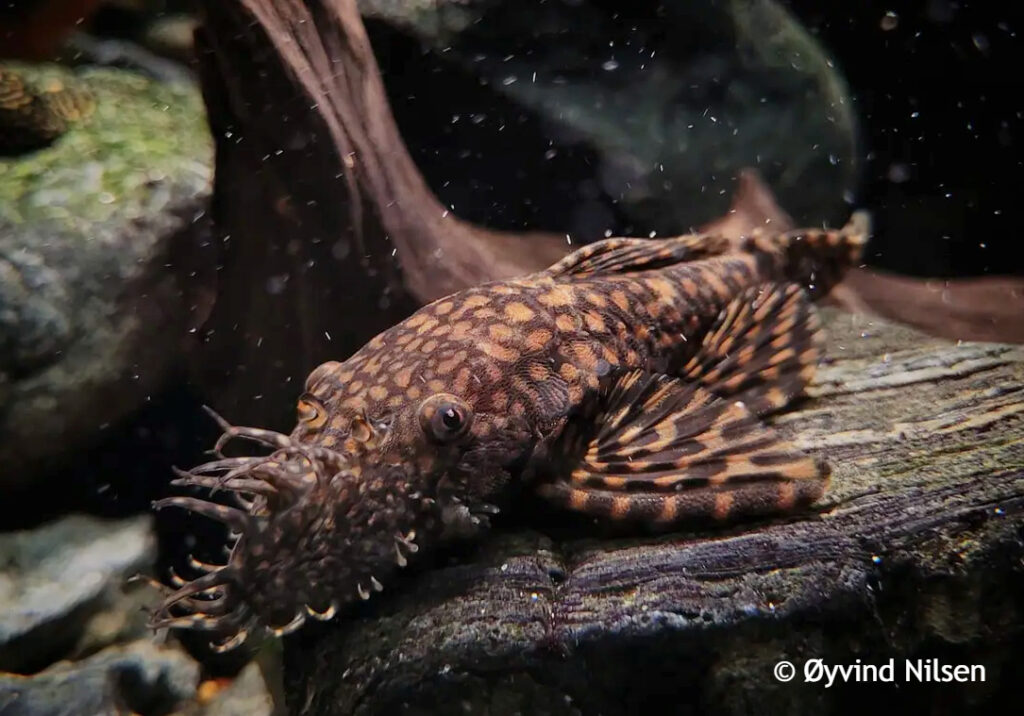

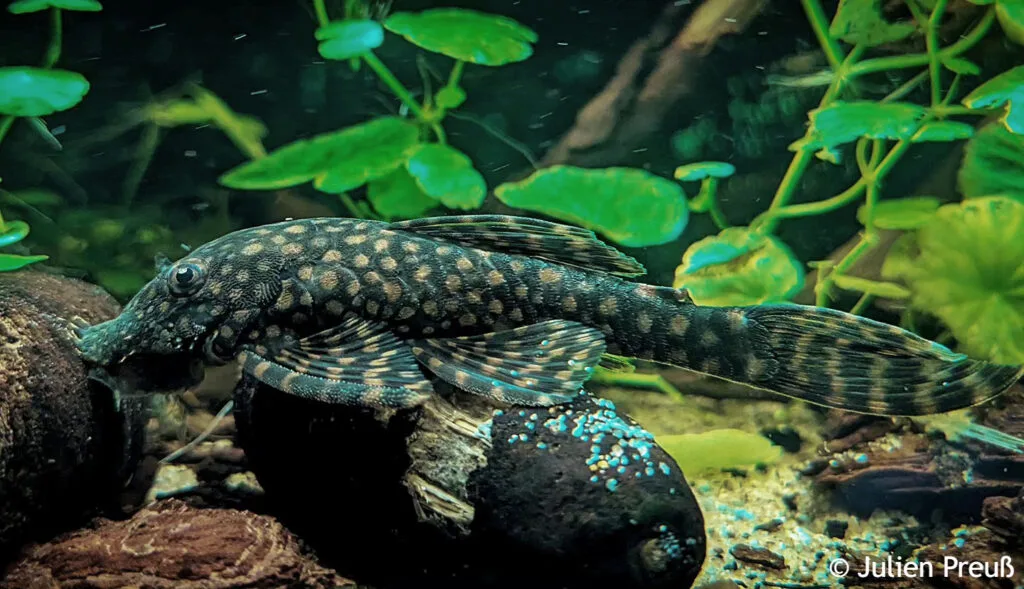
With rust red spots all over, this is a very nice Ancistrus species. Although it has been in the hobby for well over 20 years, it wasn’t given an L-number until November 2024! The reason for this is partially because it’s exact location in the Rio Paraguay system is now known. Even without an L-number, simply going by the trade name A.sp. “Rio Paraguay”, L528 has managed to gain foothold within the hobby due to its willingness to reproduce in captivity. With its great looks, small size and modest demands, it’s got all that’s needed to become a very popular species among aquarists.
Facts:
Name: Ancistrus sp.
Trade names: L528, Redspot Bristlenose, Rio Paraguay Ancistrus, Ancistrus sp. “Rio Paraguay”
Origin: Rio Paraguay, Paraguay, Bolivia
Maximum TL: 12 cm / 5”
Fish exports from Paraguay and Bolivia aren’t very common, so new wild stock of this species will not occur regularly. But since it’s easy to breed and low on demands, it’s spreading quite fast within the hobby. Its basic needs are easy to fulfil if you are a responsible fishkeeper with normal, well maintained set ups. It will eat anything, including algae, and has no specific demands when it comes to water parameters – if it’s clean, well filtered and within a normal tropical temperature range. They are big enough to reproduce already at 5 cm / 2”.
More info:
